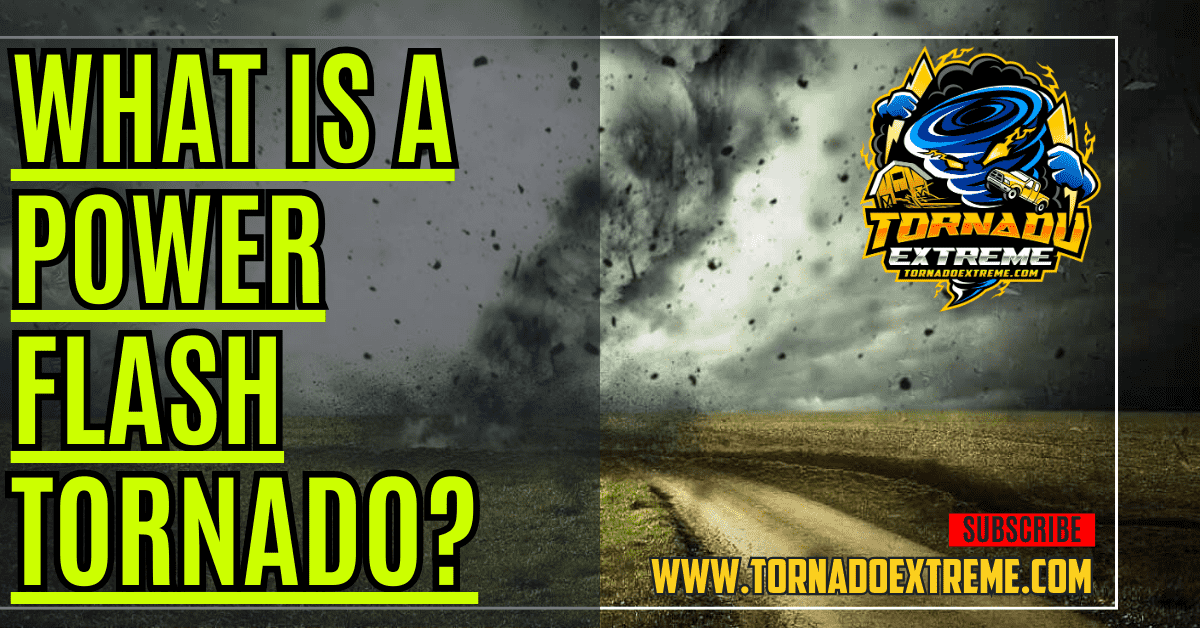When I first heard of the term “power flash tornado” it was both intriguing and perplexing. What on earth could that possibly be? A type of tornado maybe? But no, it wasn’t at all. It turns out that power flash tornado doesn’t describe the type of twister, but rather a phenomenon that occurs alongside extreme storms such as tornadoes. The moment you witness a power flash tornado, prepare yourself for sudden bright flashes of light known as power flashes, a dramatic event that can be captured on video and analyzed to improve safety measures. These are produced when the monstrous winds from the tornados damage electrical connectors which causes transformers to burst and energy lines to arc.
While working with NASA, I got the opportunity to see these power flashes in action. It’s amazing how they can illuminate an entire night sky and create flickering lights that really give you goosebumps. Witnessing this made me fully comprehend just how strong and destructive a simple twister can be, not only to buildings and landscapes but also to an entire energy grid.
Comprehending Power Flash Tornadoes
To understand what exactly happens with this phenomenon, you need to have a good grasp on meteorology and electricity combined. These power flashes take place when intense winds from a storm or severe thunderstorm start breaking electrical pieces apart. Power poles snap in half, wires break off and transformers explode causing sudden bursts of bright light (usually blue/green/white) that can be seen even if far away, a dramatic scene often captured in videos and analyzed to understand the power distribution system’s collapse.
My love for crazy weather forced me into diving deep into information about these things happening in our environment. This gave me knowledge on how meteorologists are able to predict when there’s going to be one of these monsters approaching during the night where visibility is nearly impossible. It was especially useful for me during my time at NASA because understanding how severe weather impacts human-made infrastructure led us straight towards our research goals.
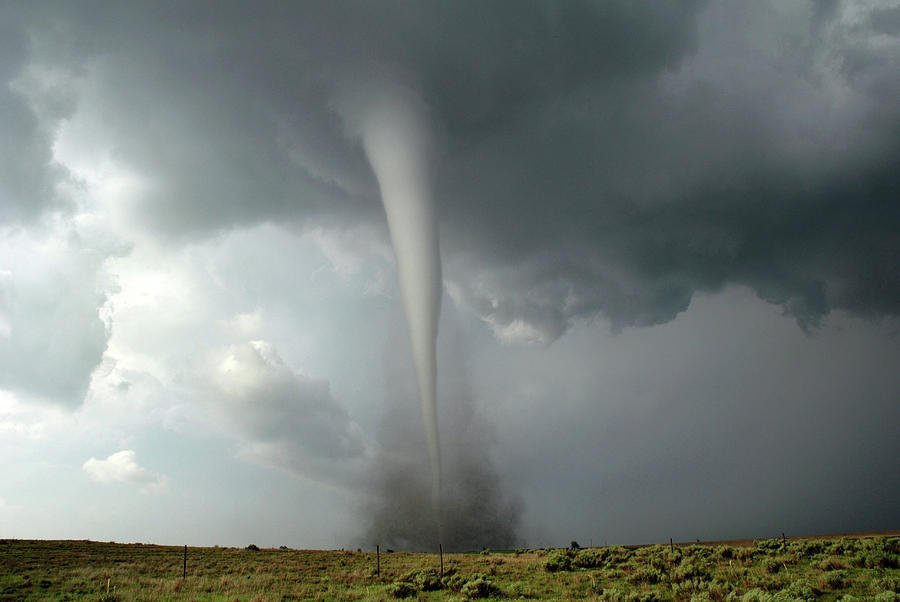
The Phenomenon Explained: What Triggers Power Flashes
So what exactly is it that causes these power flashes to occur? The primary reason is the destructive forces of a tornado or severe thunderstorm coming into contact with electrical infrastructure. When these powerful winds hit any type of energy connector, they are able to cause transformers to explode from the sudden surge in electrical current or physical damage. On top of that, when wires break off and get disconnected, electricity starts jumping over them which produces a visible flash of light.
During one of my projects at NASA I got the chance to analyze data from multiple storms. What I observed was that power flashes can actually act like an early warning system for other signs of a tornado. Their occurrence comes before others, making them extremely valuable for real-time severe weather monitoring and predictions. This research helped us understand how to better predict and prepare for these detrimental events.
See also: How Fast Does a Tornado Move? Wind Speed and FAQs
Dissecting the Causes: From Storms to Tornadoes
The transition from a severe storm to a tornado can happen in the blink of an eye so comprehending this phase is incredibly important. All tornados come as offspring from thunderstorms but not all thunderstorms lead up to tornados. In order for it to even have potential there needs to be high moisture combined with atmospheric instability and wind shear which means a significant change in wind speed or direction with height. These conditions may lead up to supercell formations which is basically just another type of storm but way more likely to start spitting out twisters.
Studying these conditions was my job at NASA, where we observed storm development through satellites to find which might produce a tornado severe enough to warrant concern. During this research, power flashes were often spotted. They occur when a normal storm turns into a destructive, tornado-creating one. Understanding them gives us more time for warning systems and the potential of saving lives, a message we strive to spread through educational videos on YouTube.
Visual Characteristics of Power Flashes
This type of flash is known for its appearance. It can show up in a few different colors, usually as bright blue, green, white or orange against the dark background of the sky at night, a phenomenon that’s easily shared through video on social media platforms. Depending on what specific piece of electrical equipment is being destroyed will give you a variation of color. Say if it’s an explosion from transformer it could be bright blue or green while arcing power lines would cause white or orange light.
I personally find these colors fascinating yet terrifying. Each hue represents destruction but knowing what causes each glow has helped my studies in sever weather analysis by providing information about the viciousness and location of incoming events.
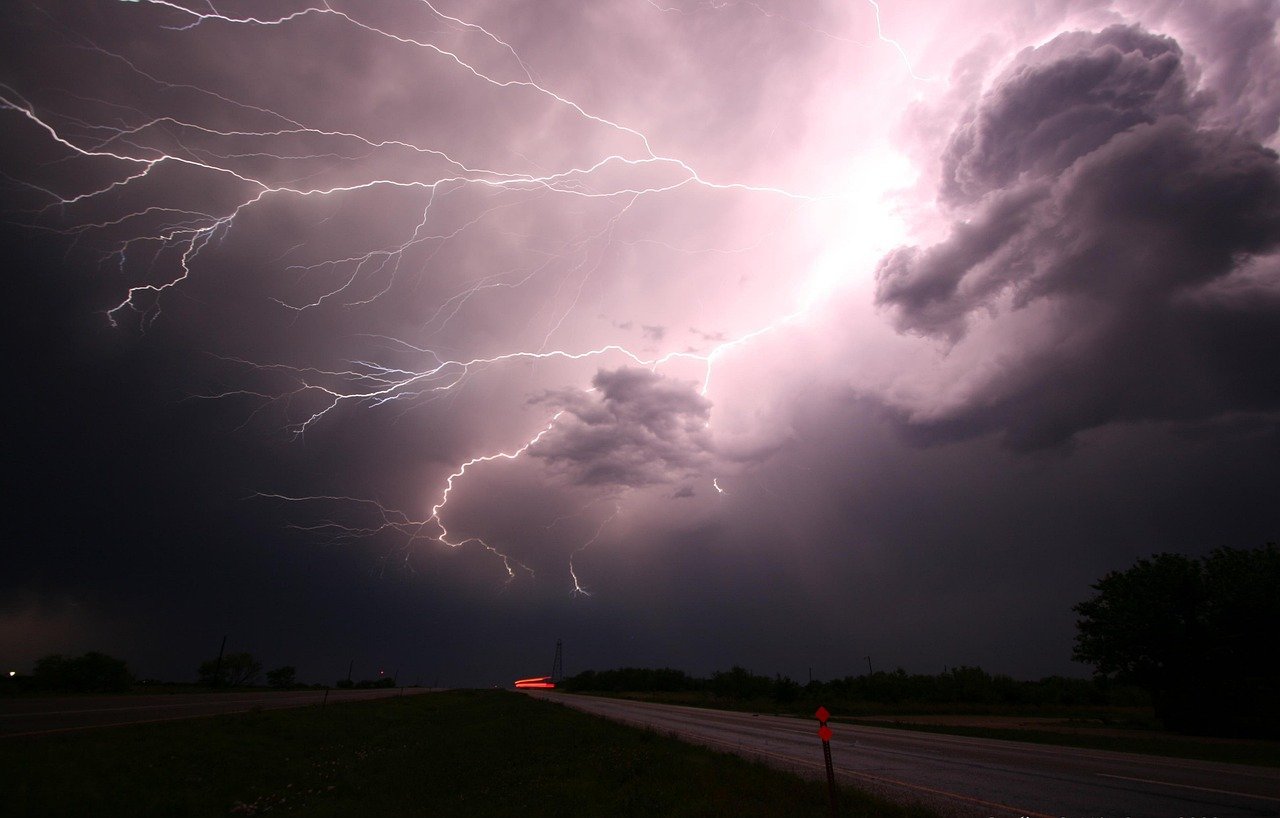
Distinguishing Between Lightning and Power Flashes
For those who are not specifically trained to spot certain differences between two similar phenomena, spotting when something goes from lightning to power flashes can be quite difficult. Lightning tends to come down all jaggedy across the entire sky while power flashes are usually just sudden bursts near the ground with a localized area glowing brightly before going back to darkness again. In addition, lightning occurs naturally while power flashes happen because man-made electrical infrastructure interacts with rough weather.
This one particular distinction played a huge role in my time at NASA’s success rate because it allowed us to accurately interpret data and visuals from storms without mixing up natural lightning occurrences with human-caused ones.
The Role Weather Plays
Power flash occurrence is directly linked to the severity of weather as well as how fast it’s going during any given moment. The most typical suspect is a tornado itself but sometimes powerful winds from severe thunderstorms can do enough damage to create a flash. The high-speed winds could snap the poles and tear power lines down and if all that happens then say goodbye, transformer. All three events cause visible power flashes.
My takeaway from working at NASA is that understanding how severe weather affects infrastructures like the ones mentioned before is key to predicting when they’ll happen as well finding ways to slow them down before they hit us. Applying this knowledge increases accuracy in the models we use to study severe weather and gives us more precise warnings for affected communities.
How Tornadoes Induce Power Flashes
Tornadoes are wind forces so strong they cause transformers to explode and power lines to arc. This interaction with electrical infrastructure emits an incredible amount of energy, forcing bright lights to shoot out in every direction known as power flash tornadoes. These types of storms are difficult to see, especially during the night, but my time at NASA has taught me that any visual confirmation of a tornado is better than none at all.
The Science Behind the Scenes
Digging into the science of power flashes is a mind-bending exercise in meteorology and electrical engineering that consumed my time at NASA. These incredibly bright, short-lived phenomena are the result of severe weather events like tornadoes causing transformers to explode and power lines to arc.
Exploding transformers can be thought of as a discharge of intense energy and physical stress on structures. You might think it’s just a big boom, but these explosions are the release of vast amounts of electrical energy in a very short time. My work involved analyzing these events to better predict when and where they might occur, contributing to our broader understanding of severe weather impacts.
The technical reasons that transformers explode or power lines arc are deeply rooted in electrical engineering principles. But to put in layman’s terms, high winds, flying debris, or falling trees cause physical damage while sudden changes in electrical load lead to surges that overload the system. Insights such as these were crucial for my research into bridging the gap between theoretical knowledge and practical application in severe weather forecasting.
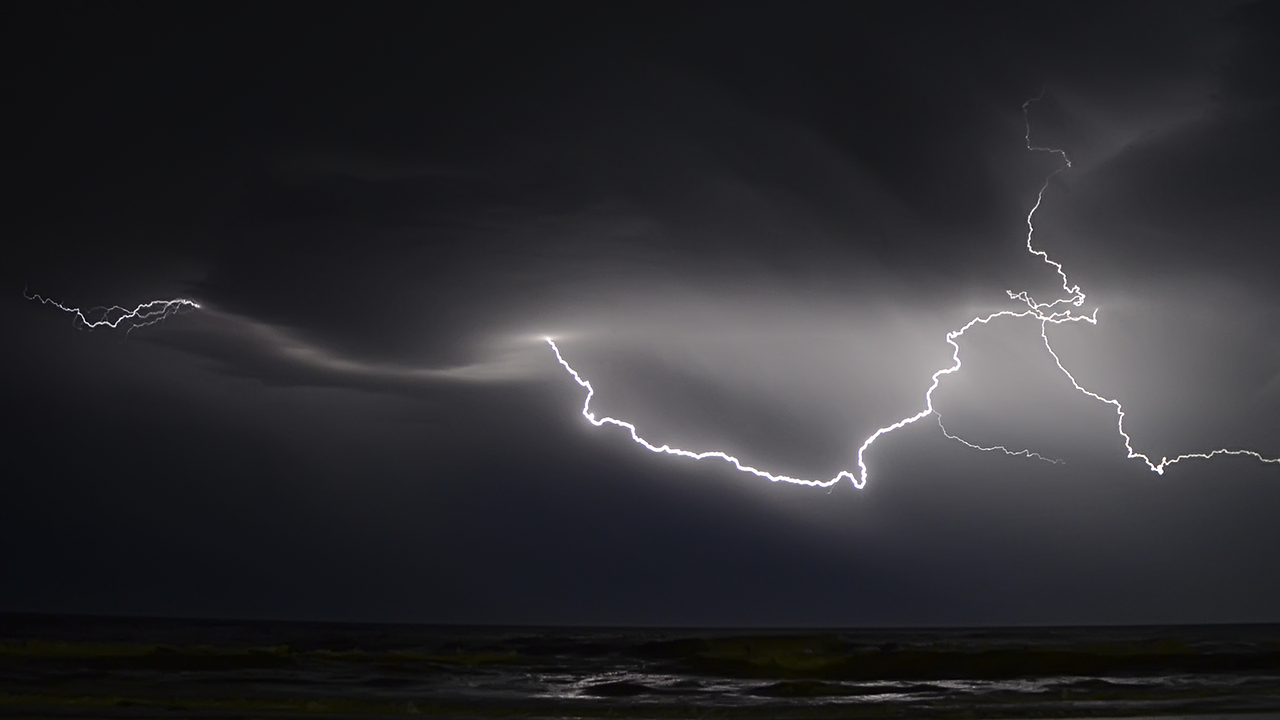
Exploding Transformers and Arcing Power Lines
When a tornado comes through and transformers explode and power lines arc to the ground, it’s not just visually stunning — it’s also a huge release of electrical energy in very little time. My job was to study this kind of thing so we could be more prepared for it. When will they happen? Where? How?
To understand why transformers blow or lines arc, you have to get into the nitty-gritty. High winds do physical damage, as does flying debris and falling trees, which are dramatic moments often captured on video and used for analysis or educational content. But changes in load can also put too much stress on the system with surges of electricity, leading to the collapse of power distribution networks, a heavy burden for any system. If something breaks during a storm, that usually means bad news.
But that’s what I’m here for! To know how things break down in storms is my area of expertise. And when you’re at the interface between theory and application in severe weather forecasting like I am — well then you have plenty more research ahead!
The Technical Explanation for Bright Flashes
The bright flashes seen during power flash tornadoes are electrical discharges occurring at really hot temperatures: up to 60 times hotter than our sun! Transformer explosions or arcing power lines release this energy as light and heat that is hot enough to vaporize metal.
Different materials produce different colors when heated by electricity, so analyzing what color light was released can lead us to learn more about what happened during the storm.
In studying these events I found their intensity and color tell us something about how bad things got on the ground. This information helps both emergency response teams as well as people designing resilient infrastructure against future storms.
Documenting Power Flashes: How They Are Captured
We had cameras both on Earth as well as those mounted on satellites designed specifically for space storm chasing. We relied heavily on dedicated storm chasers and weather enthusiasts who always seemed to be in the perfect place at just the right time, but sometimes we got lucky with satellite footage that gave us a broader perspective.
This allowed us to look at power flashes from every angle and study their frequency, distribution, and how they relate to other features of severe storms. I left NASA with a much better perspective on how much can be accomplished through collaboration between scientists, amateurs, and the public.
The Importance of Reporting and Analyzing Power Flashes
Knowing what causes them is one thing, but there is so much more to learn about these events. The first step is getting people to report them when they happen. This data allows us to diagnose what caused it after the fact.
After all this analysis we found that incorporating reports like this into our models improved their accuracy and timeliness. Additionally, sharing our findings through media channels like YouTube has significantly increased public awareness and engagement. And since each flash represents an opportunity to learn more we were able to use this information to design better infrastructure for future storms. Science has a funny way of turning pain into progress — it’s one of the main things that kept me pushing my research forward while at NASA, often sharing breakthroughs via engaging videos.
See also: Tornado Facts: Unveiling the Mysteries of Nature’s Fiercest Storms
Safety Measures and Precautions
When it comes to power flash tornadoes, safety is important. I remember working on a project with NASA where we focused on understanding these phenomena better. It was clear that knowing how to prepare and react could save lives and mitigate damages. Here, I’ll share some essential safety measures and precautions that everyone should know.
Recognizing the Signs of an Impending Power Flash Tornado
One of the first things you learn at NASA is how to recognize the signs of an impending power flash tornado. A sudden, intense flash of power against a dark sky — different from regular lightning — is one. Those flashes often come before a tornado, so you may have warning to take cover. Do not ignore a significant pressure drop and sudden calm because it could indicate that a tornado is coming.
If you hear “a loud continuous rumble (like a train)” along with power flashes, move fast to protect yourself. This sound generally occurs when high winds snap power lines; again, do not underestimate it. These warnings give you more time to keep safe.
Preparing for a Tornado: Essential Safety Tips
Preparation is key when facing any threat – especially one as powerful as this one. Establishing your safe room will be priority number one.
The ideal room goes like this: basement or an interior room on the lowest floor without any windows.
It’s also good practice to stock this room with emergency supplies such as water, non-perishable food, flashlight, and first-aid kit.
While working at NASA we had our eyes set on creating battery-powered weather radios so people could stay informed about tornado warnings etc… This can be crucial during times like this.
Aftermath of a Power Flash Tornado: Recovery and Rebuilding
After a power flash tornado strikes it seems like there’s an infinite amount of things to do till everything gets back in order. I’ve seen some communities come together to support each other while we were at NASA. It’s truly heartwarming, and sharing these moments through video on social platforms can amplify the positive impact.
The first thing you should do is check on your neighbors, especially elderly & disabled individuals, and this act of kindness and community support can be powerfully communicated through social media videos.
When assessing the damage of your property be careful not to step on anything dangerous such as glass or exposed wires. Take pictures for insurance claim purposes.
Most community centers will become recovery resources providing information on how you can rebuild.
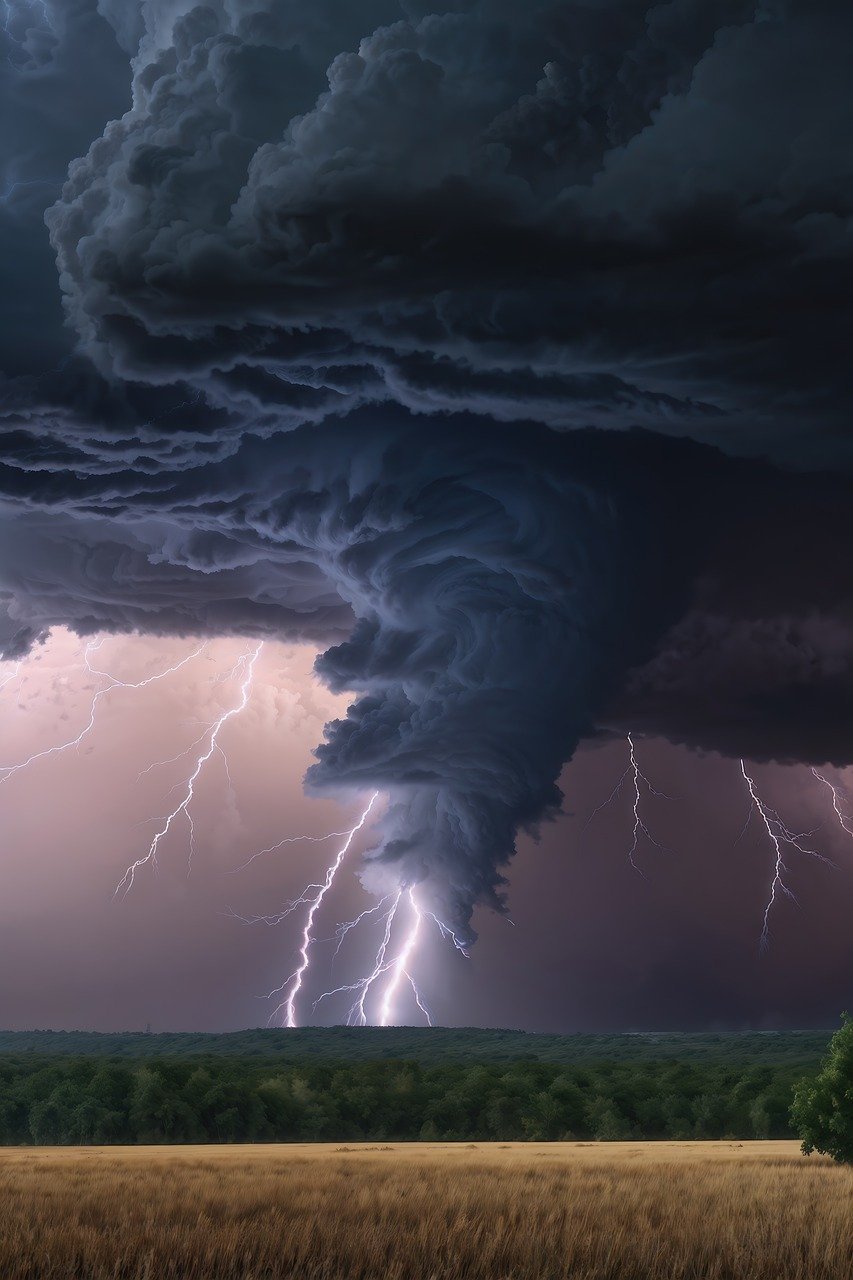
Addressing Power Outages and Infrastructure Damage
Power outages are common after a disaster like this one happens so don’t panic too much once they go black.
Report downed power lines immediately to your local utility company and inform them about any other issues regarding electricity.
While waiting for restoration efforts stay informed with radios (battery-powered), mobile devices, or listen to local authorities through loudspeakers.
Real-life Accounts and Studies
During my time at NASA, I had the unique opportunity to study power flash tornadoes. Though not as in-depth as other subjects of mine, I was able to get a first-hand look at the chaos it can cause. This was all thanks to survivor testimonies.
For me, these stories really shined a light on what people should be doing in preparation for an event like this and how they can recover, with video documentaries on YouTube being a powerful medium to share these narratives.
Up until now, scientists knew very little about power flash tornadoes up until today. By gathering data on past events we’ve been able to create forecasting models and better safety procedures that will definitely save lives in future instances.
Historical Power Flash Tornado Events
Throughout my time here, I’ve looked into historical power flash tornado events. In doing so I discovered some interesting patterns; ones we’ll find useful for future reference. Take the 2011 Super Outbreak for example: its widespread power flashes acted as a type of warning already. It allowed us to act fast, which we did, saving countless lives.
Another event worth mentioning is the Moore, Oklahoma tornado in 2013. The extensive amount of stock footage captured during this incident provided great info on trajectory and intensity. A language that’s universal with all destructive tornados—power flashes or not.
See also: What Is a Multi Vortex Tornado? A Comprehensive Exploration
Learning from Past Incidents
You’d think that by studying past incidents we would be better prepared for one like it but unfortunately that isn’t always the case. Sometimes it takes a tragedy to happen before changes are made—this shouldn’t be how it works though.
At NASA our goal is to ensure public safety; this requires us to learn from past mistakes. Looking at stock footage and interviewing survivors has definitely helped with our early warning systems and community education efforts but there’s still much work to do in order to make sure people are safe when one hits.
What else have we done? We also took a look at infrastructure damage following these events. It’s one thing to ensure everyone is evacuated in time but what about the aftermath? We’ve been able to create a sort of checklist that will have us ready for whatever comes our way next.
Ongoing Research and Technological Advances
As we speak, scientists continue to study power flash tornadoes. Everyone here at NASA is very proud of the research we’ve done so far but there’s always more that can be done, especially in adopting new media like YouTube to share our findings more broadly.
For instance, the radar systems I worked with were top-notch, a fact we often highlighted in our educational YouTube videos to explain how technology can aid in disaster prediction. With them we were able to track and predict these events almost instantly. This information was then used as fuel for developing tools that can provide earlier warnings to communities.
Innovations Aiming to Predict and Mitigate Power Flashes
Innovations in predictive technology and infrastructure design are at the forefront of efforts to mitigate the effects of power flash tornadoes. Enhanced radar systems and satellite monitoring have improved our ability to track tornado development and predict their paths, information that’s crucial for creating educational content for YouTube to spread awareness. These technological advances, coupled with improved emergency communication systems, are key to reducing the risk and enhancing community resilience against power flash tornadoes.
Final Thoughts on Power Flash Tornadoes
As I look back on my experience and review all the things I’ve learned about power flash tornadoes. It is evident that understanding these, will play a big role in our safety. The combination of scientific research, technological advancements, and community preparedness could significantly decrease the amount of risk that these phenomenon have.
While we continue to learn and improve it’s important safety measures are prioritized and everyone remains informed about the latest developments in tornado research. By doing this we can better protect ourselves, loved ones, and communities from unpredictable nature of power flash tornadoes.
In addition to the above mentioned it is extremely important for scientists, meteorologists, emergency responders, and government agencies to collaborate with one another so that when disaster strikes they have the best plan possible to respond effectively. They should be coordinating together consistently in order for there to be a coordinated and timely response during emergencies.
What’s more , Engaging with the community is also key when it comes to creating awareness around tornado safety protocols . People need to be educated about evacuation procedures, shelter options and more. This responsibility does not just fall on those organizing responses but also those affected by them – as empowering people to take proactive measures can save lives.
In conclusion of my work on power flash tornadoes with NASA . Research , collaboration , and community engagement are all fundamental when trying to mitigate natural disasters like this one . Investing time into science , technology , preparedness efforts will build a safer world for us all.
The Importance of Power Flashes, Awareness, and Education
The journey to uncover the mystery behind power flashes is a necessary one, because knowing what they are isn’t just about science. The things I’ve learned while working alongside NASA has shown me that understanding these power flashes may also reveal early signs of tornadoes. With that knowledge in our back pocket, we can save lives and keep damages to a minimum.
Lessons aren’t just for schools. They can be shared broadly through video content on social media platforms, making learning easily accessible and engaging. Sharing this information with the public should be paramount in any disaster preparedness campaign. The more people that know about it, the greater chance we have at reducing loss when a natural disaster strikes.
Enhancing Public Safety Through Education
Those who are in the know can rest easy knowing their odds of surviving a power flash tornado increases quite extensively. But there’s no need to keep valuable information all to ourselves– sharing is caring after all! By making people aware of what they should be looking out for and teaching them how to react in these high-stress situations, we’re increasing not only their odds but everyone else’s as well.
Technology is a useful tool if used correctly. When it comes to warnings and disseminating emergency information, nothing beats it. Always focusing on improvement will ensure that we continue down the right track and better prepare ourselves against future dangers caused by power flash tornadoes.

